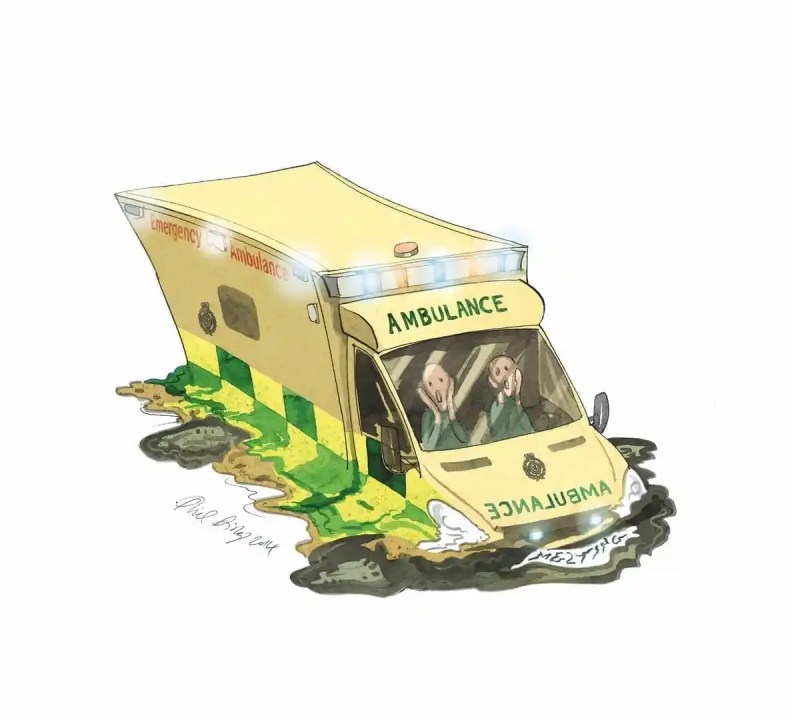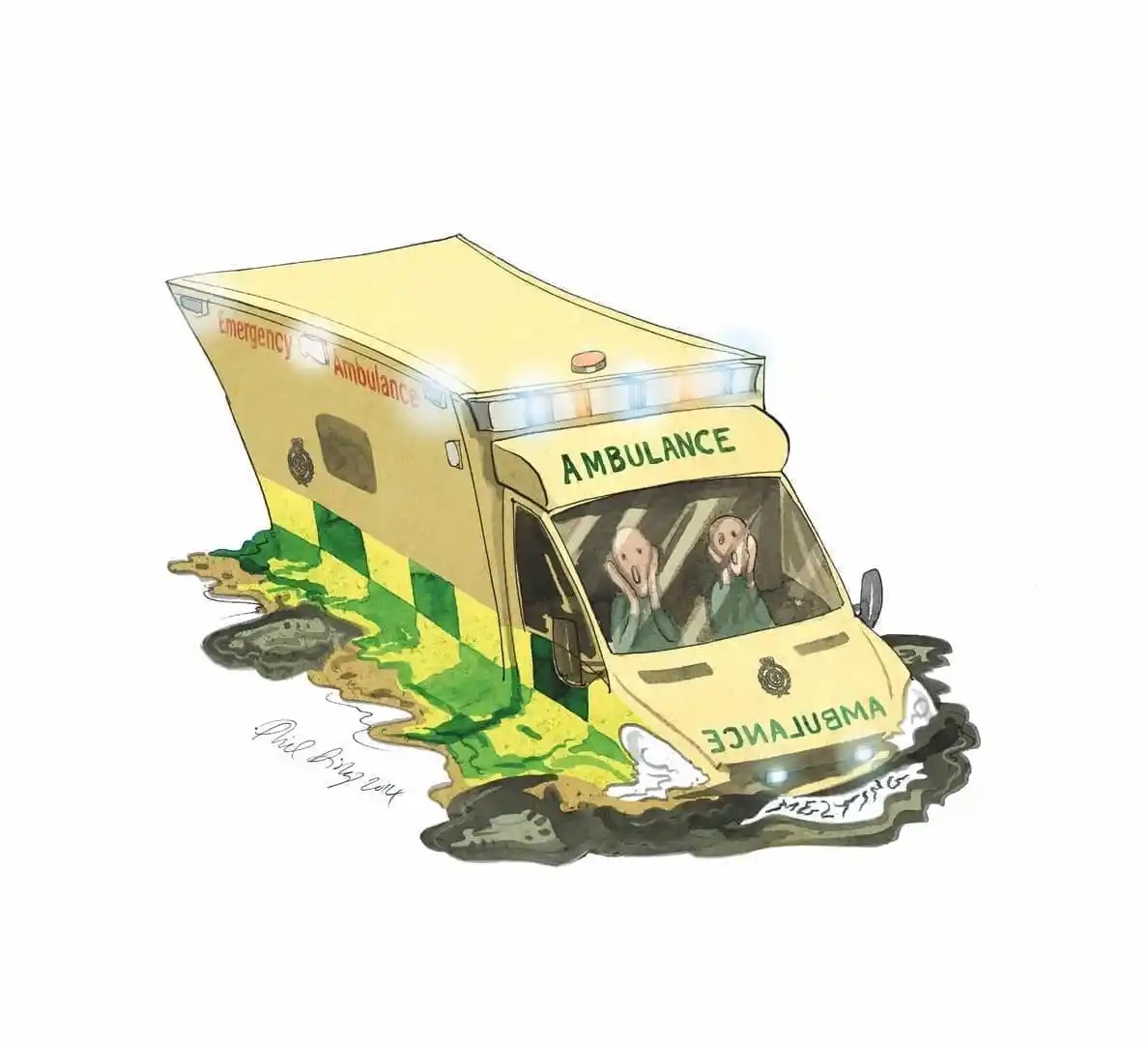Confronted by the threat of an ambulance workers’ strike, the Health Secretary could not have been more forthright: ‘Those concerned must face up to the consequences of their actions. Lives are at stake. The ambulance men have put their case to me. It will not be strengthened by some of them adopting what will be seen as a callous attitude to the lives and health of their fellow men. Enough is enough. Only the innocent will suffer if health service workers allow their anger to run out of control.’
It is the escalation of industrial action in the NHS which causes the most serious concern, given the harm that could be inflicted on vulnerable patients
That statement was made in the Commons by David Ennals, a key member of the Labour Cabinet, at the height of the Winter of Discontent in January 1979, as a mood of militancy swept across the land. Today, more than 30 years later, the same spirit of chaos and turmoil now grips the public sector workforce, reflected in the growing rash of stoppages on so many fronts, from the Border Force to universities.
But it is the escalation of industrial action in the NHS which causes the most serious concern, given the harm that could be inflicted on vulnerable patients. On Wednesday 21 December, following the first nationwide walkout by nurses in the 106-year history of the Royal College of Nursing, more than 10,000 ambulance employees will embark on a one-day strike in support of their pay claim. If the government does not improve its offer beyond the current proposed 4 per cent rise, then another strike will be held a week later on 28 December.
There will be widespread sympathy for the ambulance crews, who have to work under enormous pressure in a service where demand is increasing relentlessly. The number of calls for an ambulance was over 10 million in the year to March 2022, almost double the total of a decade earlier, while response times have worsened and long waits with patients outside hospitals have become common. The strain on crews is reflected in the prevalence of absenteeism, which has gone up from a rate of 5 per cent in 2019 to 9 per cent, the highest level of any organisation in the NHS.
But, echoing David Ennals’ speech in the Commons back in 1979, much of the public will also feel a sense of shock that ambulance crews, whose very existence is meant to be based on the protection of lives and the alleviation of physical suffering, should be willing to take such a drastic step as part of a pay dispute. These strikers would appear to be engaging in a gigantic act of emotional blackmail, exploiting their monopoly power and sentimentality about the NHS for financial gain.
The three trade unions behind the ambulance strike – the GMB, Unite and Unison – strongly deny such charges. In fact, they maintain the very opposite, arguing that they are motivated by a humanitarian rather than a selfish impulse Their aim, they declare, is actually to improve patient safety by forcing the government to provide more NHS funding and enhanced staffing levels. ‘Make no mistake, we are in the fight of our lives for the very NHS itself. These strikes are a stark warning – our members are taking a stand to save the NHS from this government,’ says Sharon Graham, the leader of Unison. Rachel Harrison, the National Secretary of the GMB, takes the same line: ‘After 12 years of Conservative cuts to the service and pay packets, NHS staff have had enough. The Health Secretary Steve Barclay needs to listen and engage with us about pay.’
But this defiant rhetoric can overcome the ugly reality at the heart of the ambulance strike: that frailty and sickness are being weaponised by the trade unions in pursuit of higher pay. It is both illogical and immoral of the strikers to claim that they care so much about patients that they will deliberately put them in danger. Indeed, they are frank about the consequences of the walkout. Reportedly, they will attend heart attacks but not falls, even though the latter can be fatal. In effect, a culture of fear and intimidation is now being created, where present harm will be increased in order, theoretically, to reduce future harm,
The withdrawal of labour is an anachronistic, bludgeoning tool in the 21 century, totally unsuited for a vital service like healthcare. There are plenty of other ways that staff can air their grievances without directly hurting patients, such as lobbying politicians, campaigning in the media or holding protests. Nor are the unions’ justifications for the strike as powerful as they claim. For all their talk about poverty, ambulance staff on average – according to the Department of Health – are paid a basic salary of £34,300-a-year, while additions such as overtime, geographical supplements and unsocial hours allowances can boost earnings by 37 per cent, taking packages to £47,000. At the same time, despite all the moans about Tory cuts, the number of ambulance staff has gone up since th last year of the Labour government to now.
Moreover, giving all healthcare staff a major increase this year would impose a huge new burden on the NHS. Every 1 per cent rise in non-medical staff pay is estimated to cost £700 million, and Steve Barclay has said that the bill for a settlement across the non-medical NHS workforce this year that matches inflation would be £4.4 billion, almost 3 per cent of the NHS’s entire budget in England, currently £152.6 billion.
There is no evidence that pouring more unaffordable sums into staff pay packets will bring any improvement in service. Indeed, just the opposite has happened with GP practices. Since the 2004 contract which allowed them to shorten their hours in return for higher pay, the service has been in accelerating decline. And the government cannot ignore the lessons of the Winter of Discontent, when the continual appeasement of the unions fed a spiral of competing wage demands that sent inflation soaring and the economy into paralysis.
The NHS desperately needs reform as much as cash. For years, the trade unions have been a bulwark of resistance to any alteration in the failing, centralised, bureaucratic status quo, which is characterised by low productivity and ineffective management. Yet now, by their irresponsible, reckless actions, they may paradoxically turn out to be the catalysts for change.







Comments